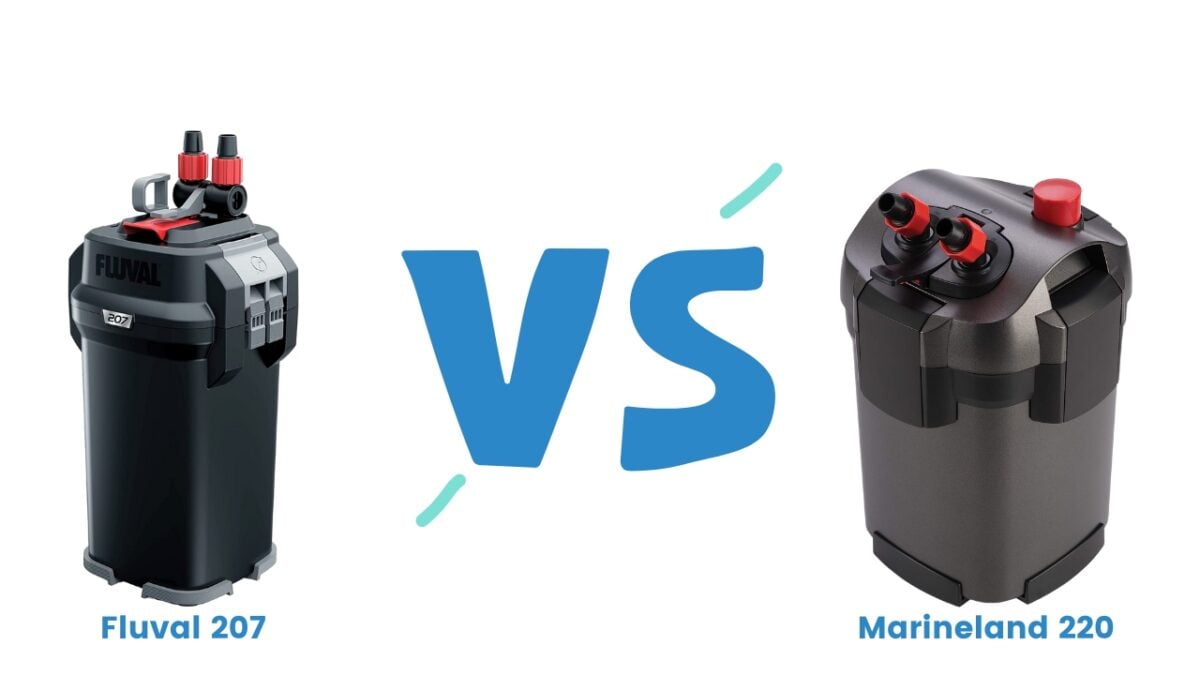
- Fluval 207 vs Marineland 220 – Quick Version
- What Size Canister Filter Do I Need?
- Fluval 207 and Marineland 220: Detailed Comparison
- Installation and Setup
- Filtration Performance
- Maintenance and Cleaning
- Pump Performance and Efficiency
- Filter Noise
- Price
- Conclusion – Fluval 207 vs Marineland 220, Which Should You Buy?
Fluval, a reputable brand in the aquarium world, offers the Fluval 207 canister filter as an upgraded option for its predecessor, the Fluval 206. It’s designed with improved performance and enhanced features to ensure your fish get the clean and healthy environment they deserve.
On the other hand, Marineland has designed the 220 canister filter, which is also packed with features that make it a strong competitor in the market.
This Fluval 207 vs Marineland 220 comparison will go over the technical specifications and features of both canister filters so you can determine the best fit for your aquarium setup.
Fluval 207 vs Marineland 220 – Quick Version
I know in-depth isn’t for everyone, so to speed things up, here’s the quick version with all the essential info.
You may notice my tank size suitability figures differ slightly from what Fluval and Marineland state. I’ve done a chart further down explaining how I work this out.
| FLUVAL 207 | MARINELAND 220 | |
| Tank Size | Up to 40 Gallons (150 Liters) | Up to 40 Gallons (150 Liters) |
| Pump Output | 206 g/ph (780 l/ph) | 220 g/ph (830 l/ph) |
| Adjustable Flow Rate | ✓ Yes | ✗ No |
| Power Consumption | 120V – 10 Watts / 230-240V – 10 Watts | 120V – 20 Watts |
| Annual Running Cost (Approx) | $13.15 | $26.30 |
| Dimensions | H 16.5” x L 7.5” x W 7” | H 14.74″ x L 8.88″ x W 11.75″ |
| Filter Media Included | 2 x Bio-Foam Max pads, 2 x Bio-Foam pads, 1 x Bio-Foam + pad, 1 x bag carbon, 1 x bag BioMax rings, and 1 x Quick Clear pad | 2 filter foam pads, 1 water polishing pad, 2 bags of Black Diamond Activated Carbon pouches, 1 bag of Ceramic Filter Rings, and 1 bag of Bio Filter Balls |
In summary, both the Fluval 207 and Marineland 220 canister filters provide excellent filtration for your aquarium. Both come with everything you need right out of the box.
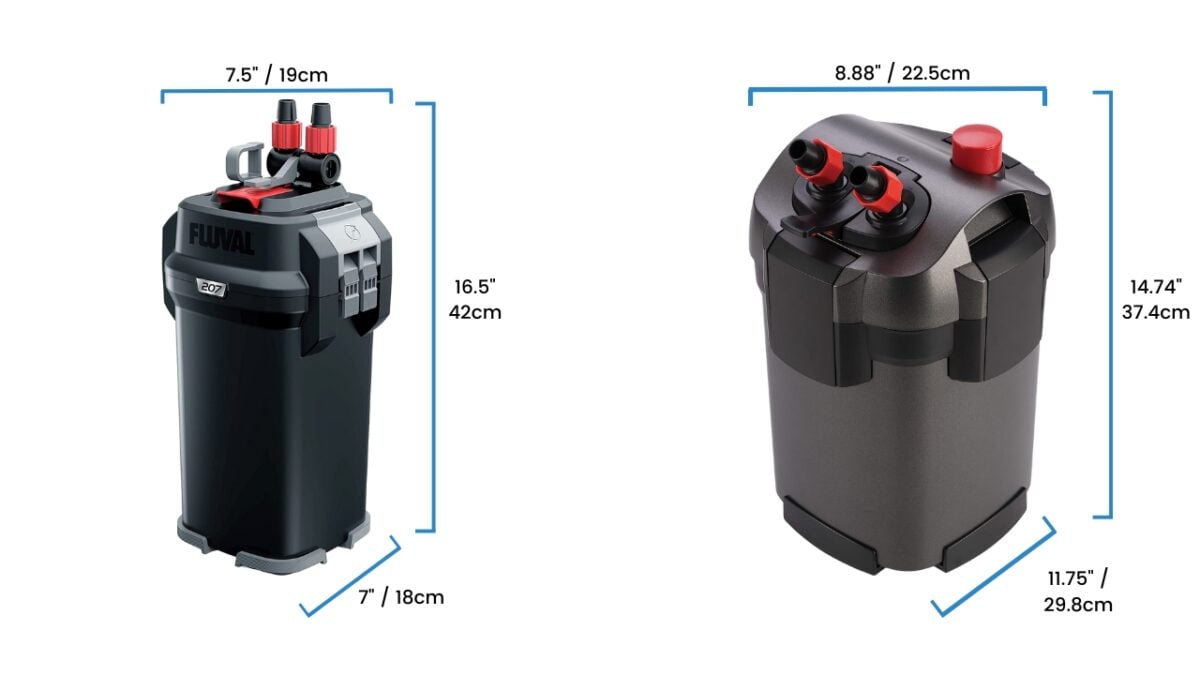
If you’re asking me which I’d buy, I’d go with the Fluval every time. I’ve used them for years and have always found they are well-built and ultra-reliable.
The 207 uses half the amount of electricity, is easier to set up and maintain than the Magniflow 220, and it’s quieter too, so it’s a no-brainer for me.
What Size Canister Filter Do I Need?
A general rule of thumb is that you want the pump output (gallons per hour) to be 5 times the size of your tank, so multiply the size of your tank by 5 to find out the g/ph that is ideal.
I’ve found that following this simple calculation stops you from buying a filter that is too small or too large (and wasting money) for your aquarium.
If you have an overstocked stocked tank that has a large bioload, it’s recommended that you multiply your tank size in gallons by 10, to find a suitable turnover rate for your tank.
Since there is no standardized calculation used by all the different manufacturers, each manufacturer may suggest a different tank size suitability for their ‘XXX g/ph’ filter.
By using this formula, you can compare filters from different manufacturers on an equal basis.
| TANK SIZE (GALLONS) | NORMAL STOCKING LEVELS | HEAVILY STOCKED TANK |
| 20 | 100 g/ph | 200 g/ph |
| 29 | 145 g/ph | 290 g/ph |
| 40 | 200 g/ph | 400 g/ph |
| 55 | 275 g/ph | 550 g/ph |
| 75 | 375 g/ph | 750 g/ph |
| 90 | 450 g/ph | 900 g/ph |
| 100 | 500 g/ph | 1000 g/ph |
Most manufacturers state the g/ph when the filter is empty with no media in place.
Once the media is in place (and it’s got gunked up after a while!), these g/ph figures reduce drastically and the real-world turnover rate will probably be around 50% less.
Nonetheless, I’ve found that the filtration based on this calculation is more than adequate.
Fluval 207 and Marineland 220: Detailed Comparison
Now for those of you who like to know every last detail, grab yourself a coffee and get comfortable, we’ll dive into all the differences.
I’ll also go over how to set up and maintain both filters, no one wants a filter that’s a pain in the butt to maintain!
Tank Size
Both the Fluval 207 and Marineland 200 are suitable for aquariums of up to 40 gallons.
Type Of Fish You Keep
Different fish require different levels of filtration. Some fish are particularly messy so you need to make sure your filter can cope with them.
I’ll list a few common messy fish and if you keep any of these guys you may be best choosing a larger filter that has more capacity for filter media to catch the additional mess, keeping your water clean and clear.
Bristlenosed Pleco – Although these guys are part of a tank’s clean-up crew and do a great job of eating algae and leftover food, all that algae and food have to come out the other end!
Cichlids – In particular large cichlids like Oscars, who are known to rip up plants, stir up the substrate, and even re-arrange rocks, all creating lots of mess.
Goldfish – These guys love to dig around and stir up the substrate and are known for pooping a lot, so you need a filter that can cope.
Turtle – If you keep a turtle rather than fish in your aquarium, you will need a much more powerful filter to deal with the amount of waste they produce, check out my turtle filter guide for more info.
Freshwater and Saltwater Compatibility
Both the Fluval 207 and Marineland 220 external canister filters are designed to work in freshwater and saltwater aquariums.
Filter Media
Both filters come with all the filter media you need which includes all 3 stages of filtration.
Mechanical Filtration Media
Mechanical media catches all of the debris in the water, if you’ve got loads of stuff floating around in the water, it’s time to rinse out those filter pads!
Biological Filtration Media
Biological filtration uses beneficial bacteria to consume highly toxic ammonia and nitrites, turning it into safer nitrate, which you then reduce with water changes and by having live plants.
Ceramic rings and bio balls provide valuable extra surface area for beneficial bacteria to colonize, aiding in breaking down these harmful toxins, and keeping your nitrogen cycle in check, helping keep the water safe for your fish.
Chemical Filtration Media
Activated carbon helps remove chemical impurities, odors, and discoloration from the water, keeping it crystal clear and smelling sweet, no one wants a stinky fish tank!
Activated carbon needs to be replaced regularly as it will stop working, aim to replace it after a month.
Important: Carbon also removes medications, so remove all activated carbon filter media when treating your fish with medication.
The Fluval 207 comes with the following filter media:
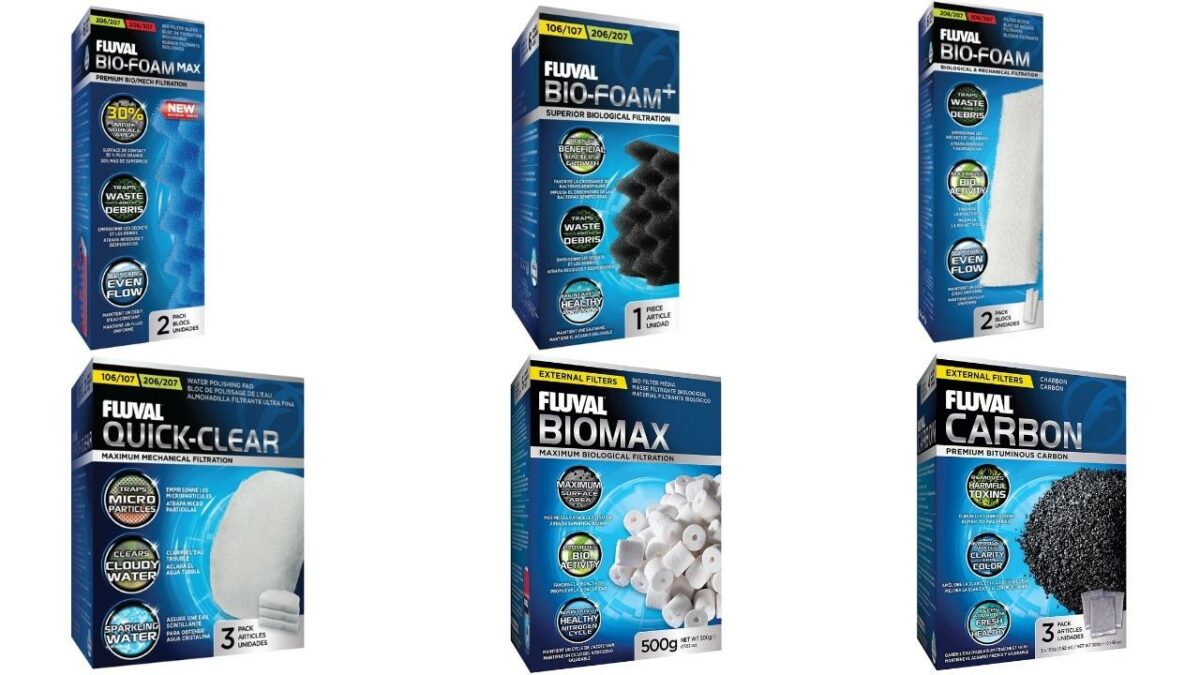
- 2 x Bio-Foam Max pads
- 2 x Bio-Foam pads
- 1 x Bio-Foam + pad
- 1 x bag of carbon
- 1 x bag of BioMax rings
- 1 x Quick Clear pad
The Marineland 220 comes with the following filter media:
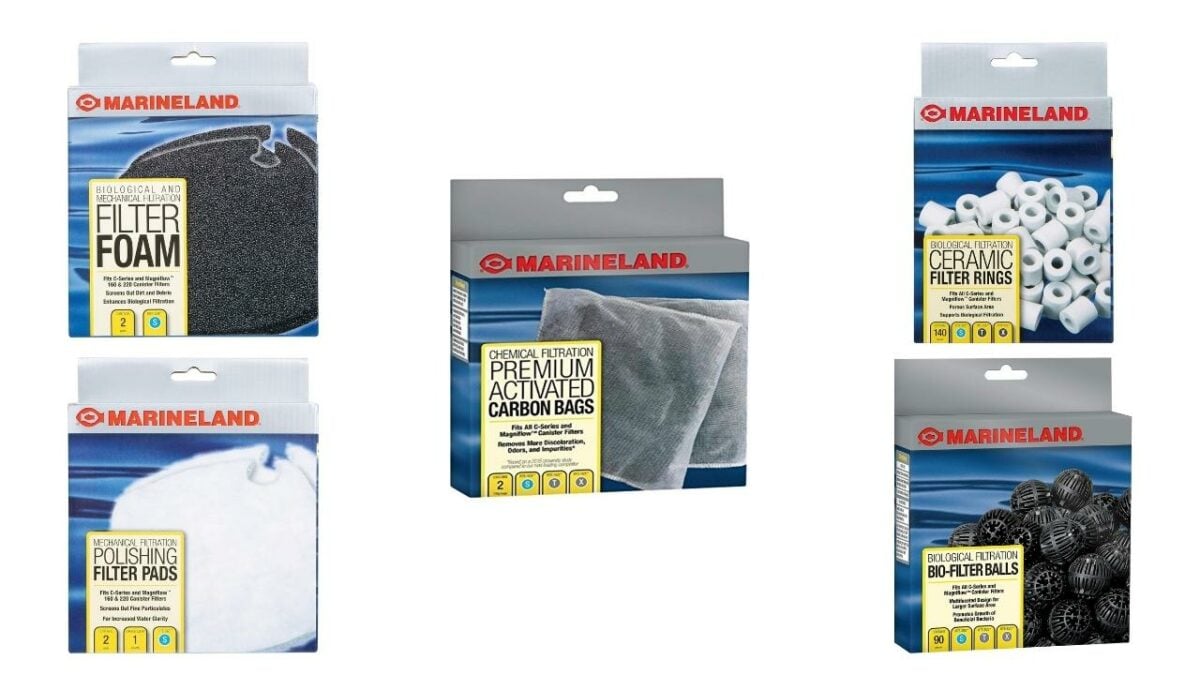
- 2 filter foam pads
- 1 water polishing pad
- 2 pouches of Black Diamond Activated Carbon
- 1 bag of Ceramic Filter Rings
- 1 bag of Bio Filter Balls
Where the Fluval 207 really sets itself apart from the Marineland is the option of customizing the media within the filter with the optional ammonia, nitrite, and phosphate pads.
The ammonia and nitrite pads help the Fluval 07 series canister filters cycle new tanks faster and keep heavily stocked tanks safer, preventing fish loss.
Installation and Setup
Neither of these filters can be used right out of the box, there are a few things you have to do first.
Setting Up The Fluval 207
The Fluval 207 is an absolute breeze to set up.
I’ll also include a video as sometimes it’s just easier to watch before reading an explanation.
Although it arrives assembled, you have to take it all apart as there’s a leaflet inside the canister, the filter media comes sealed in plastic bags, as does the rubber gasket seal that goes between the canister and lid.
Give all the filter media a rinse before using it, you don’t want any bits of dust getting pumped into your tank.
Fitting all back together is child’s play. Inside the canister are tracks molded into the sides to form different compartments.
The filter media baskets and frame that hold the Bio-foam and Bio-foam Max pads will only fit back inside one way.
TOP TIP: When you’ve put the Bio-foam+ and quick clear pads back in the bottom tray put the red lifting handle through the basket at this point.
It’s much easier to stack the rest of the baskets on top of each other with the handle in place rather than inserting the handle once you’ve stacked the baskets on top of each other.
Install the rubber gasket on the filter lid.
Like the baskets, the canister lid will only fit one way too. The 207 badge on the front of the lid fits into a notch molded into the rim of the canister body.
The hose clamps do a great job of keeping the intake and output hoses in place.
When it comes to fitting the hose clamps to your tank, all I’ll say is: read the instructions first. I’m a typical guy, instruction manuals must not be read at all costs, I will struggle and tear my hair out first!!
Basically, the fittings have 2 parts: the clamp that fits onto the tank and the cover that secures the piping in place.
The covers need to be fitted vertically. The rear part of the clamp and the pipe cover slide together using tongue and groove moldings. The underside of the curved part of the cover then clips onto the curved part of the clamp, it’s easy once you know how!
Aquastop Valve

The Aquastop valve is a key feature of the entire 07 canister filter range.
This valve allows you to stop the water flow and then detach it from the filter in one piece, making cleaning and maintenance way easier.
To install the Aquastop valve:
- Place the Aqua stop valve on the inlet and outlet ports on the top of your canister filter and press the red lever down to lock it in position.
- Lift the grey lever up so it’s vertical to put the valve in the OFF position.
Placement
Place the filter on a flat and sturdy surface, beneath your fish tank.
Canister filters are ‘gravity fed’ so they need to be below the tank for them to work correctly. If you put a canister filter at the side of a tank, the top of the filter must be below the surface of the water, but it can be tricky to get the filter working efficiently.
Position the filter as close to your aquarium as you can and avoid any sharp bends or turns in the tubing.
Fit The Tubing
The intake and output hose is supplied in a single length that you have to cut yourself.
To avoid miscutting my pipe the wrong length (come on, we’ve all done it!) I find it easier to attach both ends of the pipe to the filter valves at this point, then cut it once I know it will reach over the top of the tank and back into the water.
If you do miscut the tubing, it’s not the end of the world, you can get a replacement length of tubing.
You’ll need to take into account the length of the intake assembly when trimming the intake pipe which is 10.5” (26.5cm)
The Aquastop valve is clearly marked which side is the intake and outlet so you can’t get this wrong.
The output nozzle does a decent job itself, but you can add the Fluval Spray Bar Kit, to help eliminate surface scum and aerate the water.

Priming
To prime the pump:
- Make sure your output nozzle is above the water’s surface so it has access to air.
- Press the grey lever on the Aquastop valve downwards so it sits on top of the red lever.
- Move the priming handle up and down 3 or 4 times until you can hear the filter filling itself with water.
Once the canister filter has filled with water, plug it into the mains power and you should have water flowing out of the outlet nozzle and you can now top up your aquarium to the desired level.
That’s it, the Fluval 207 is now set up and good to go.
Setting Up The Marineland Magniflow 220
This is my biggest gripe with this filter. It’s a little frustrating to set up.
Like the Fluval 207, it arrives ready assembled, and you’ve got to take it all apart as the filter media comes in plastic bags.
As does the canister, the water valves, the O ring gasket, the tubing, intake and output assemblies, etc. Why use so much throw-away plastic in this day and age?
As always, rinse the filter media under your tap as it can get a little dusty during shipping.
The media trays are the same shape as the canister opening. But, you’ll notice that they have an arrow on the handle.
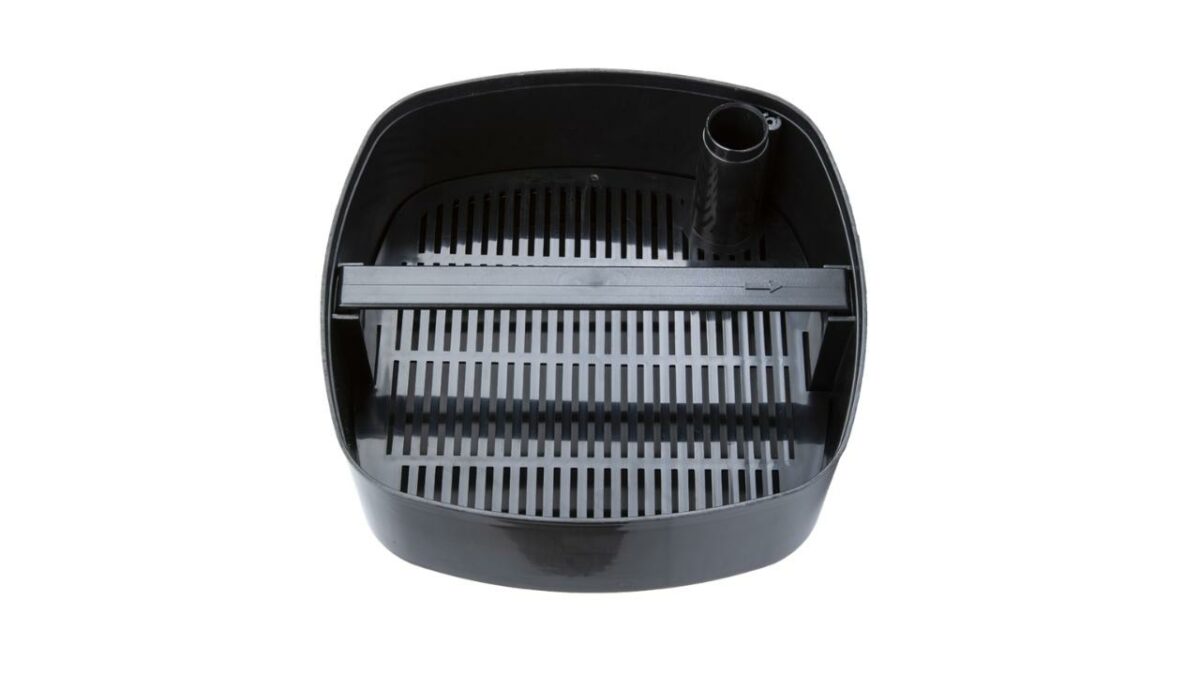
When you put the trays back into the canister, make sure the arrow lines up with the arrow on the tab on the filter case.
Fit the O Ring to the filter lid. This isn’t mentioned clearly in the assembly instructions for some reason – It is mentioned on the back of the green parts leaflet, but could easily be missed!
Fill the canister with dechlorinated water or tank water. This step is optional, but if you do this, you’ll have an easier time priming the filter.
Fit the canister lid.
Valve Block
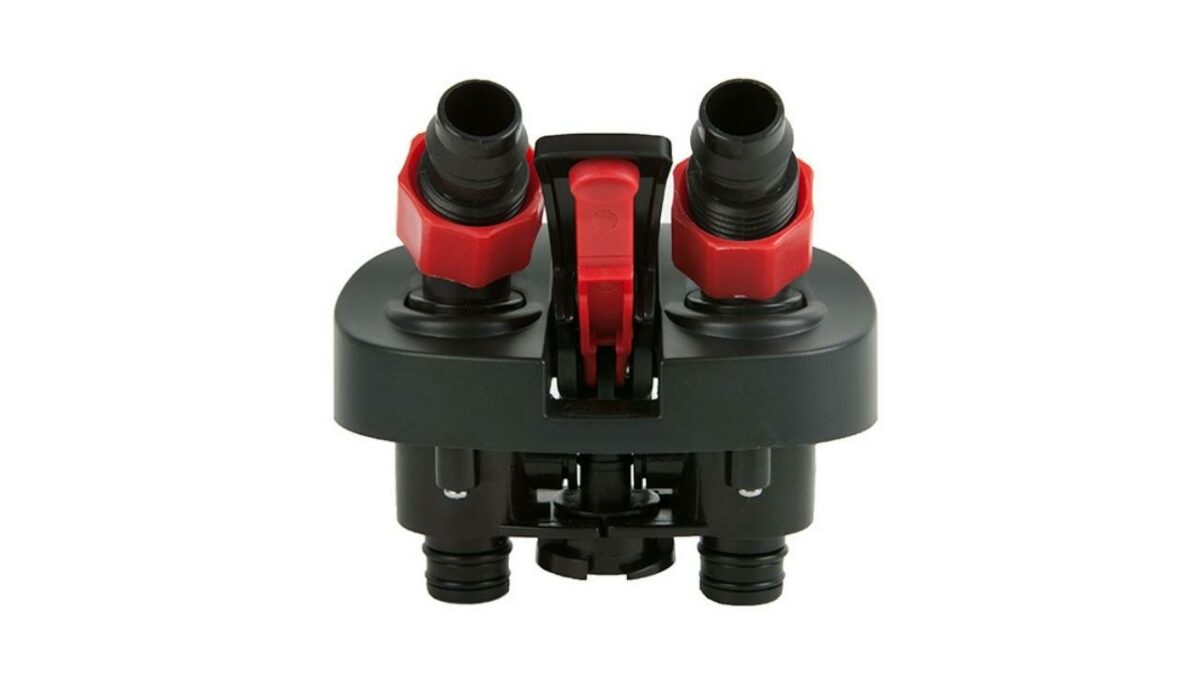
The Marineland valve block, like the Fluval 207’s AquaStop valve, also allows you to stop the water flow and detach it from the filter in one piece, making cleaning and maintenance easier.
I had a little trouble getting these things to stay in place, but then my wife dared to suggest that I read the instructions…would you believe, reading the instructions actually helps?!
The valve has 2 levers, 1 red and 1 black. To install it:
- Start with both levers in a vertical position and turn the red lever counterclockwise.
- Press the valves onto the filter, turn the red lever clockwise, then press it down.
- Now press the black lever downwards.
Placement
As with the 207, place the filter as close to your aquarium as you can, making sure it’s on a flat and sturdy surface, beneath your fish tank.
Fit The Tubing
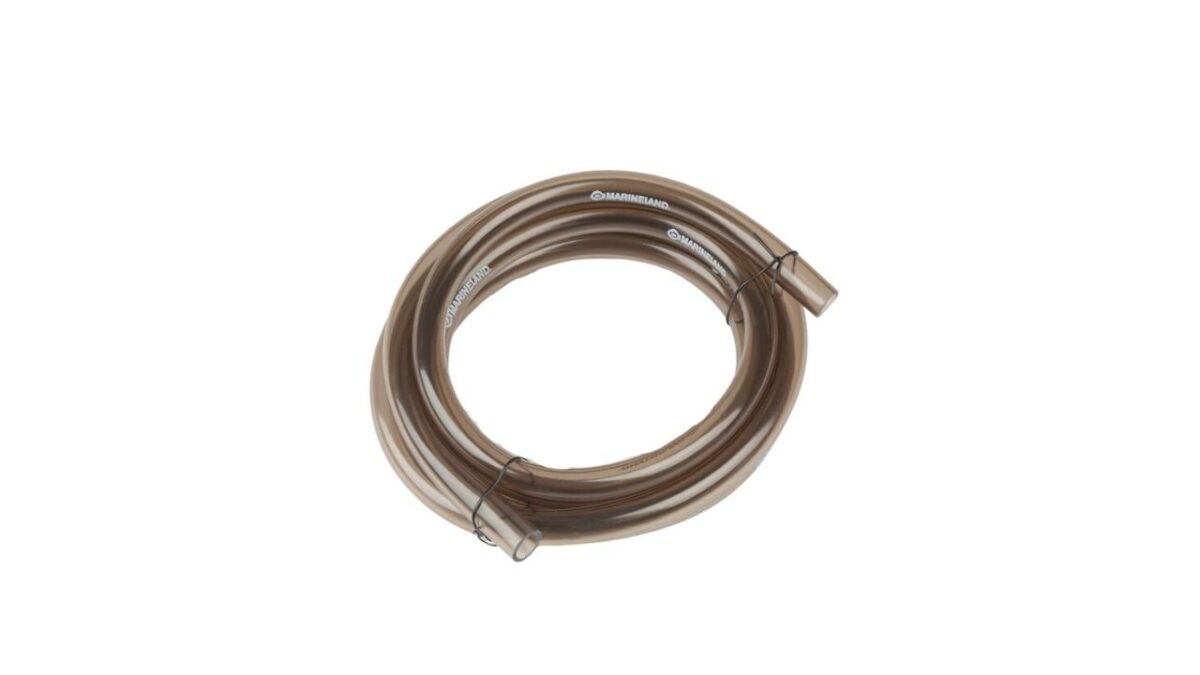
Now for those darn hoses. The Marineland hoses come tightly coiled and feel quite stiff, and if you’re a neat freak like me, you’ll want your hoses in a nice and neat straight line.
Soaking them in hot water for 10 minutes softened them and helped.
Attaching the hoses to your intake and output assemblies is simple enough, just push the hose up to where it needs to go and fasten the snapper clamp in place to hold it together.
Fit the intake and outputs to the tank with the suction cups which do a decent enough job.
One of my gripes here is the intake doesn’t extend far down into the tank and there’s no extension tube included.
I’m not a huge fan of the snapper clamps. I had to use a pair of pliers to get them tight enough as they made my fingers sore squeezing them together. Maybe that’s just me, I don’t have the greatest grip strength.
You have to have the snapper clamps fastened fully or your filter system won’t be air-tight which will mean it’s difficult to prime and won’t run at full efficiency.
You could get yourself some ⅝” hose clamps that you tighten with a screwdriver or hex-head driver to save your fingers.

Attaching the hoses to the filter valves is simple enough, just push them on and screw up the red nut to hold the hose in place.
The intake and output valves are clearly marked which is which.
Priming
Priming the 220 is easy:
- Make sure your output nozzle is above the water’s surface so it has access to air.
- Put both red and black levers on the valves in the downward position.
- Press the red prime button on top of the filter several times until it starts to draw water in from your tank.
Once the canister is full of water you can plug it in and you should have water coming out of the outlet nozzle.
I always recommend having a drip loop on all electrical items for your aquarium, we all know water and electricity are not a good match!

Filtration Performance
There’s nothing in it between the 2 when it comes to performance.
Both filters do a great job of removing toxins and detritus, keeping the water parameters stable and the water crystal clear.
Where the Fluval 207 comes into its own is the option of the ammonia, nitrite, and phosphate pads. So if you’re setting up a new tank, or have a heavily stocked tank, there are extra filtration options available.
Maintenance and Cleaning
It is the same process for cleaning both Fluval 207 and Marineland 220, so I’m not going to do separate sections for each.
There’s no set answer for how often you should clean your filter. It differs from one aquarium to another and depends on many factors, mainly how many fish you have and how messy they are.
Never use soaps or detergents to clean your filter (or aquarium).
- Unplug from the mains power, shut off the water flow by lifting the grey or black lever, then lift the red lever to disconnect the valves from the filter.
- Put a towel and bucket on the floor and empty the water from the filter into the bucket (this will save you from having to dunk your hand in dirty fish poop water in the following step) you’ll then use this water to clean everything.
- Remove the filter lid.
- If you have the Fluval 207, the EZ-Lift media baskets can be removed with one finger using the red handle.
If you have the Marineland, the Stack-N-Flo baskets need to be removed one at a time, which is why I empty the water out of the canister before opening it.
Clean the mechanical filter media: Gently squeeze the sponge or coarse foam media in the bucket to remove larger debris and waste particles, you don’t need to get them spotless.
Inspect and rinse the biological media: Check the ceramic rings and/or bio-balls for any accumulated debris and gently swish them in the same bucket to remove surface dirt.
Replace the chemical filter media as needed: Chemical media has a limited lifespan and should be replaced according to the manufacturer’s recommendations or when you notice a decline in water quality.
Top Tip: Use the water in the bucket that you rinsed all the filter media in to water your house plants or garden, your plants will love it! - Clean the filter’s impeller and housing. Over time, debris and slime can accumulate in this area, resulting in reduced pump performance.
Remove the impeller and gently clean it in the bucket and wipe out the housing where the impeller sits with a cloth. - Clean the main body of the canister where the filters go. Add a bit of water and swish it around to loosen any brown sludge in the bottom and pour it into the bucket.
- Finally, using a bottle brush clean the input and output nozzles to remove any buildup or debris. These nozzles pull apart easily so you can get into all the nooks and crannies.
- Once everything has been cleaned, reassemble the media baskets, fit the lid, reconnect the valves, and press the black or grey lever down. You will hear a flow of water as your filter re-fills (if you don’t hear water flowing, pump the primer a few times).
Once your filter has filled up plug it back into the mains power.
Top Tip: When you put the lid back on, push it down firmly all the way around before clipping the brackets in place. This ensures you have a nice tight water seal and avoids any leaks.
You will need to lubricate the rubber o-ring occasionally using a silicone based lubricant.
Pump Performance and Efficiency
When you’re planning to upgrade to a new canister filter, the filter’s pump performance and energy consumption are important things to consider with the ever-increasing cost of living.
Pump Output and Circulation
The Fluval 207 has a filter circulation rate of 206 gallons per hour (780 L/h).
The Marineland 220 has a slightly higher filter circulation rate of 220 Gal/h (832 L/h).
Both filters are therefore suitable for an aquarium of up to 40 gallons.
The Fluval 207 has an adjustable flow rate so you can fine-tune the water flow to your fish’s needs. The Marineland 220 doesn’t have this feature.
Energy Efficiency
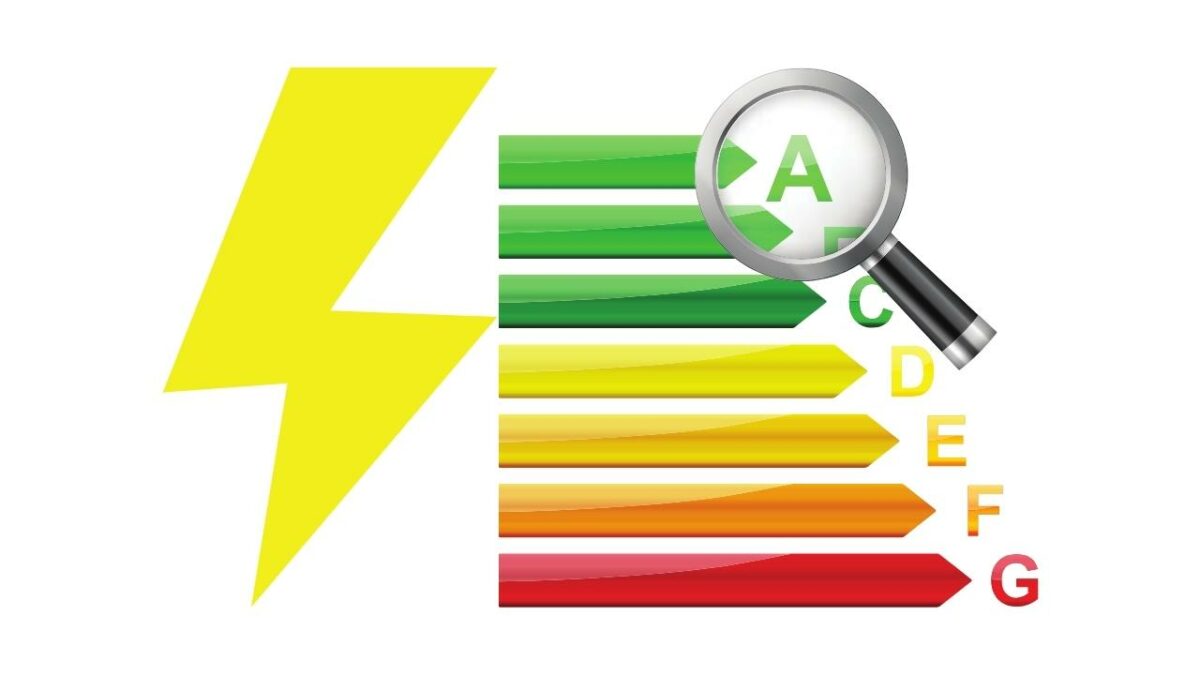
With ever-rising energy prices, this has to be something to take into consideration.
The Fluval 207’s power consumption is 120V – 10 Watts / 230-240V – 10 Watts.
The Marineland 220’s power consumption is 120V – 20 Watts
The approximate annual running cost of each filter is:
- Fluval 207, based on $0.15 per kWh = $13.15 per year.
- Marineland 220, based on $0.15 per kWh = $26.30 per year.
Filter Noise
I’m really sensitive to background noises, the slightest little thing drives me nuts if I’m trying to read or watch TV.
For consistency, I test canister filters for noise using the noise app on my Apple Watch, and I have the watch right next to the filter.
- The Fluval 207 comes in at 48 decibels
- The Marienalnd 220 comes in at 55 decibels
Price
Both filters have a similar price point, with the Fluval tending to be a little higher.
Conclusion – Fluval 207 vs Marineland 220, Which Should You Buy?
The Marineland 220 is a decent filter, but it does have a few issues, so I’d buy the Fluval 207 every time.
Why?
- It’s easier to set up
- It’s easier to maintain
- It’s quieter
- It has an adjustable flow rate
- It costs less to run each year
- It’s reliable
Sure you may have to pay a few extra bucks for Fluval, but it’s well worth it in my opinion.
Many complaints I see about the Marineland 220 filter are that it leaks and is difficult to prime. Remember to:
- Fill the canister with water before refitting the lid
- Fit the rubber o-ring to the lid
- Make sure the snapper clamps are nipped up real tight (carefully use pliers if necessary)
This will help to eliminate these issues…or you could save yourself the hassle and get the Fluval instead!
Check out the equipment section for more comparisons and setup guides like this one, and the aquarium health section for guides on keeping your finned friends happy and healthy.






